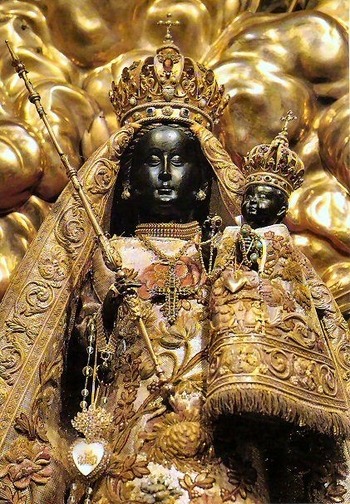
It was in the early centuries of the Christian era that the ancient worship of the Mother Goddess was introduced to Christianity by Jews who had fled Israel and embraced Alexandrian Neo-Platonism, which is just a rehash of Greek paganism.
"Some of the mythological representations of Virgo are Nana, Eve, Istar, Demeter, Hecate, Themis, Hera, Astraea, Diana, Cybele, Isis, Fortuna, Erigone, Sibylla and the Virgin Mother. All representations of the Great Mother in some form. She who existed before the masculine gods of ancient and classical mythology."
The Alexandrian Jews who worshipped the Greek goddess, Kore, managed to convert their pagan goddess worship into a theologically respectable tradition called Gnosticism by giving the goddess the trappings of Christianity. Although they worshipped her as the Holy Virgin, "virginity" has an altogether different connotation to Gnostics than it does to Christians.
It was in the Gnostic culture of Alexandria that the Mother Goddess evolved into Mary Magdalene. Ean Begg wrote in The Cult of the Black Virgin that, "...many of the finest Gnostic writings are of Alexandrian inspiration or origin. Alexandria is also the main source of Gnostic works linking Jesus with Mary Magdalene. According to this tradition it was through the Magdalen, rather than through Peter and the male apostles, that Jesus transmitted his secret doctrine."
Here it is apparent that the worship of the Mother Goddess, Virgo, under the appellation of Isis, spread from Egypt into Israel and from Israel to the centers of the Roman Empire: "The cult of Isis was widespread in the Egypt of the dynastic period. From Egypt it spread northwards to Phoenicia, Syria and Palestine; to Asia Minor; to Cyprus, Rhodes, Crete, Samos and other islands in the Aegean; to many parts of mainland Greece - Corinth, Argos and Thessaly amongst them; to Malta and Sicily; and, finally, to Rome. In the first century BC, Isis was perhaps the most popular goddess in the Eternal City, from which her cult spread to the furthest limits of the Roman Empire, including Britain: her only rival was Mithras.
In fact, the worship of the Virgin Mary in the Roman Catholic Church, along with the entire body of Catholic tradition, can be traced to the worship of Isis in Egypt. {See: Mystery Babylon the Great: Catholic or Jewish?}
http://www.bibliotecapleyades.net/merovingians/merovingian_dynasty/merovingian_dynasty01.htm
No comments:
Post a Comment